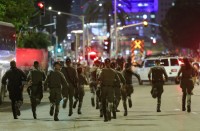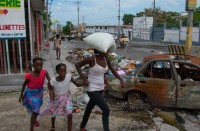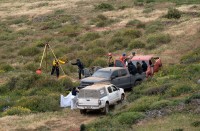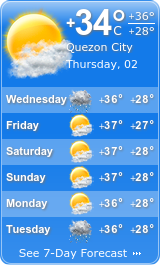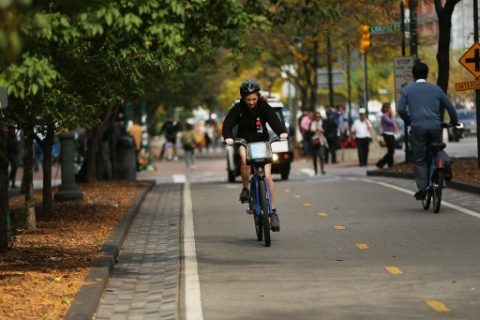
by Thomas URBAIN
Agence France Presse
NEW YORK, United States (AFP) — The Manhattan cycle path where a truck attack killed eight people reopened on Thursday, as New Yorkers and tourists flocked back to the much-loved spot to reject fear and relish in the city’s trademark diversity.
Floral tributes remain in honor of the 20 victims, the eight who died and the 12 injured when an Uzbek immigrant allegedly inspired by the Islamic State group smashed onto the path on Tuesday.
“We are stronger. We are NYC,” is chalked into the ground. An Argentinian soccer jersey hangs in tribute to the five Argentine friends who perished while cycling on a high-school reunion trip.
Otherwise there was no trace of death on the path that has been a much-loved fixture on Manhattan’s west side for nearly 20 years, a tranquil place to enjoy a stroll or a bike ride along the Hudson River.
At the intersection where Sayfullo Saipov crashed into a school bus, exited his vehicle and brandished a paintball gun and a pellet gun stands a “ghost bike” memorial erected for a cyclist killed in a hit-and-run in 2016, covered in flowers.
Mary, who refused to give her last name, came to lay a flower in honor of 23-year-old Nicholas Cleves, one of two US men killed in what was the worst attack in New York since the September 11, 2001 Al-Qaeda hijackings.
Her son knew him. He is the same age.
Mary says Cleves was a “beautiful young man.” She comes to the parkway most days, a “place for peace” to get away from the noise in a city of 8.5 million, the financial capital of the world’s biggest economy.
Over the years, people have complained that the cycle path is not properly sealed off from the road. That allowed Saipov to smash straight onto the path, mowing down pedestrians and cyclists at high speed.
“It’s really dangerous,” says Deborah Salant.
“I’m disgusted,” she added. “There should be no cars allowed on the path.”
‘They can’t stop you’
But nothing stopped her from cycling like mad to the southern tip of Manhattan, determined to expunge any ghosts.
“I’m not going to let them take over. I was in Toulouse during the killings and I’m here now,” she said of the 2012 attack that killed seven people. “Nobody’s going to stop me.”
A German couple in their 60s, who flew in from Dusseldorf to head off on a cruise, never considered cancelling their trip to New York for a second.
“This is large city,” says Klaus Wiercimok, who stopped with his wife at the scene. “The likelihood of such a thing to happen is almost null. It can happen anywhere.”
New York is famously resilient and fiercely proud of having bounced back after the 9/11 attacks. It is also a city where more than three million people were born overseas and half the people speak a language other than English at home.
“You’re hit in the face. What are you gonna do?” says Ted Wright, 43, docking a Citi Bike from New York’s bike-sharing program on his way into the office.
“I’ve traveled the world, lived in China, Los Angeles, Boston, in Europe, in Mexico. This is the best city,” he said.
“Just look at what we’re looking at right now. There’s a black guy, a Chinese guy crossing the street, that’s an old European immigrant,” he said, gesturing around him. “That’s what we’re about.”
Living your life is the only response to militant attacks, he said.
“The only way we’re going to win is by staying positive, staying above the fray,” he counselled. “Just keep doing what you’re doing, because they can’t stop you.”
© Agence France-Presse

